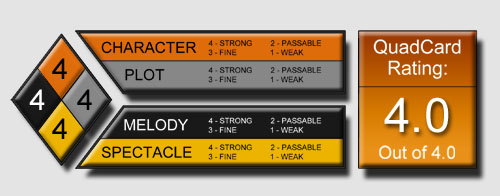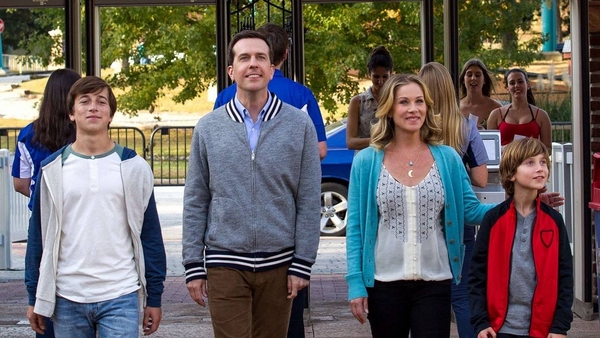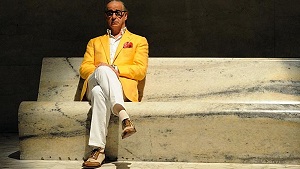
Maybe the most impressive feat Paulo Sorrentino pulls off with The Great Beauty is one of restraint; in two hours and twenty minutes, not a single reference is made to the man whose actions most strongly inform the backdrop of the Italian filmmaker’s latest picture. That would be Silvio Berlusconi, Italy’s erstwhile prime minister and unapologetic career scoundrel, whose bunga bunga stink wafts through every orgiastic party Sorrentino stages throughout his exquisitely crafted film. But that just speaks to the lasting impact Berlusconi’s negligence and corruption have had on Italian society since his resignation in 2011; no one need mention his name to invoke his presence. He’s a specter looming over the country’s landscape, now but hopefully not forever.
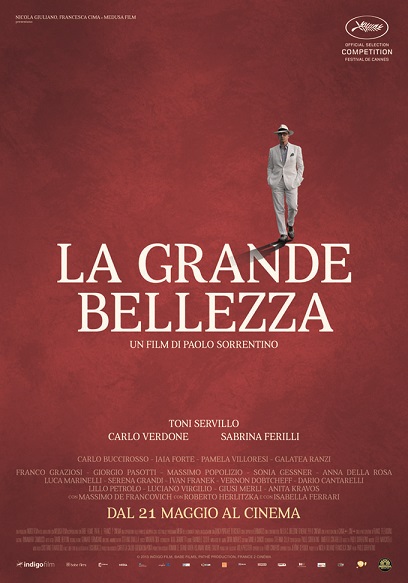 This is all to say that The Great Beauty, like so many other films released in 2013, is a document of reckless self-indulgence and rampant excess, honed in on the place of its origination. At a glance, that may be a warning sign of European exclusionism, but for all of the ticks, quirks, and mores unique to Italy that come up within the film’s framework, it remains remarkably accessible – if frequently elliptical. The Great Beauty sprawls, not in a way that renders the lion’s share of its many moving parts unnecessary but in a way that emphasizes how important each is to understand the rest; bound together almost as a collection of vignettes, every sequence makes up one small aspect of a grand, awesome whole.
This is all to say that The Great Beauty, like so many other films released in 2013, is a document of reckless self-indulgence and rampant excess, honed in on the place of its origination. At a glance, that may be a warning sign of European exclusionism, but for all of the ticks, quirks, and mores unique to Italy that come up within the film’s framework, it remains remarkably accessible – if frequently elliptical. The Great Beauty sprawls, not in a way that renders the lion’s share of its many moving parts unnecessary but in a way that emphasizes how important each is to understand the rest; bound together almost as a collection of vignettes, every sequence makes up one small aspect of a grand, awesome whole.
Of course, that whole happens to be littered with celebratory vapidity and willful vacuousness, so viewers with a low tolerance for wasteful frivolity (a kind way of describing the antics of Italy’s crème dela crème as Sorrentino portrays them) may find The Great Beauty‘s point of focus repellant. For everybody else, simply latch onto the film’s audience guide, Jep Gambardella (the great Toni Servillo) – an author whose lone novel enjoyed such huge success that he’s been able to preserve his title as king of the socialites for decades as a result – as he leads us from one extravaganza to the next and moseys through the streets of Rome, both old and new, for respite. Just keep in mind that the old is better than the new.
That off-hand quip is rolled out within the film’s first half hour or so, yet it happens to be integral to meeting The Great Beauty halfway. Sorrentino’s movie is clearly a grandchild of Federico Fellinini and, to a lesser extent, Roberto Rossellini, two legendary icons in Italian filmmaking; as with the former’s La Dolce Vita and the latter’s Rome, Open City, The Great Beauty exists to capture a specific moment in time in the country’s lifespan. Sorrentino cuts closer to the sweet life, though, than to wartime, and so his film becomes a successor to the movie that sparked a civil war, fought through newspapers, in the 1960’s.
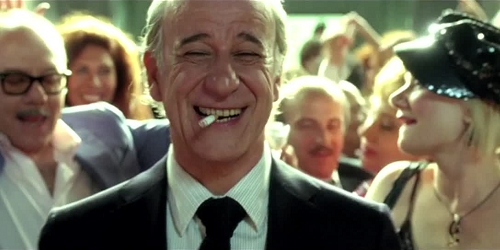
Whether The Great Beauty possesses the same power to spark outrage, well, that’s yet to be seen, but there’s no doubt that it aims to ruffle feathers. Jep’s days of dolce fare niente – sweet, idle loafing – take him from his opulent digs, where he holds court with hangers-on, faceless revelers, philosophers in training, and even a saint, to an endless series of encounters with Rome’s bleak culture of debauchery and disillusionment: a lavish Botox boutique, a woefully aloof performance artist, a doomed high-class stripper, a religious leader handier with cooking tips than guidance, a magician who openly admits his charlatanism. One has to visit Capitoline Hill and bask in the presence of Rome’s talking statues just to take a pause for reflection and find some peace.
A little known name in America, Sorrentino nonetheless maintains a position of high esteem in the hierarchies of international cinema. An effort like The Great Beauty, at once an ode to the maestros of his homeland and their work as well as a barbed critique of contemporary Italy, would vault any first-timer to immediate prominence; for Sorrentino, it should only further prove his gifts as a director and as an artist. More than anything, this is a work of self-refinement. Sorrentino may be the heir apparent to Fellini and Rossellini, but with The Great Beauty he has not simply called on their respective spirits – Fellini’s tongue in cheek visuals, Rossellini’s sense of morality and social justice – for the sake of his work; he’s further crystallized his personal vision as a director.
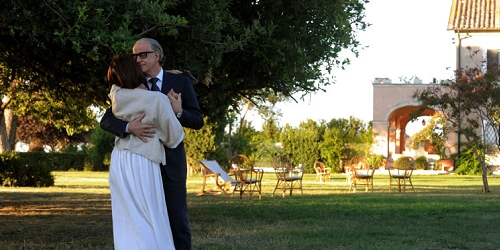
So, in other words, Sorrentino is irrefutably Sorrentino, no matter how strongly The Great Beauty‘s surrealist heart beats with his influences. (Though he’s not so proud that he abstains from making direct reference to La Dolce Vita‘s epilogue.) How many of his contemporaries can synthesize their inspirations this well and come out with something original on the other end? The Great Beauty doesn’t feel like homage; it feels organic, as though it has existed for years but lacked the proper conduit to give it form. Sorrentino and leading man Servillo, who knows how to take a leisurely stroll like nobody’s business, do just that, resulting in a picture that’s brimming with vitality and yet is tainted with a haze of tragedy: the old linger, the young burn themselves out, and society decays.
G-S-T Ruling:
What are we to do, then, but pierce through the noise – the “blah, blah, blah”, as Jep puts it – and tap into the life that pulses underneath it? The better question may be how we accomplish that feat, and The Great Beauty cedes no easy answers. It does, however, end with a beginning, a reminder of sorts for Jep to be the person he tells us he was born to be – a man of sensibility, a writer. If we take Sorrentino at his word, then maybe the world doesn’t have much use for someone so armed with an endless array of bon mots and barbed observations; with exceptions, perhaps the effete, self-satisfied elite are content staying on a train that goes nowhere. But that doesn’t mean we have to stay aboard with them as they motor toward oblivion.
